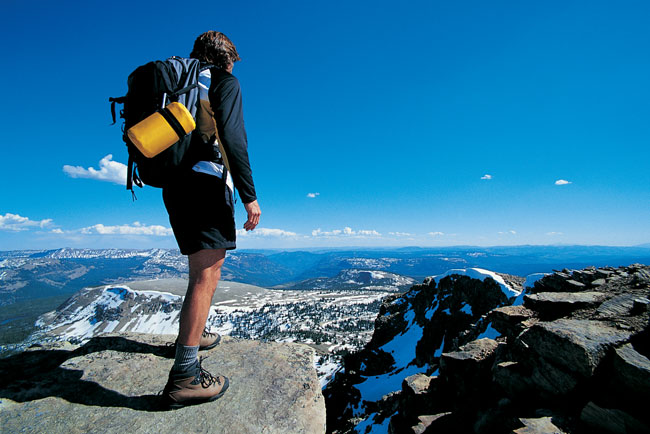
Whatever backpacking adventures you’re planning this year, Tri-State Outfitters can help you get there in comfort and safety. Not only do our hiking experts have the product knowledge to guide you to the right gear for your journey, they’re also experienced in the outdoors and understand the local terrain.
We’ve put together a list of resources to help get you started-off on the trail right.
Get a good pack. We carry packs from Osprey and The North Face, as well as tents, sleeping bags, pads and all the camp essentials you’ll need out on your trek.
Here’s what you should look for in a durable, functional pack that will outlast your adventures:
- Water resistant material – Don’t let you stuff get wet out there. Dry gear can make the difference in you staying warm enough to survive on a cold night. Make sure your bag is made out of a semi-waterproof material to protect your gear even in a drizzle.
- Multiple Compartments – Multiple compartments are a must. It’s easier to find your things efficiently if you can access them quickly, and it’s a better way to keep organized than shoving everything in one sac. Plus, compartments are a way to keep your dirty items separated from your clean items.
- Internal Frame – An internal frame backpack has support rods and a frame built into the backpack so you can’t see it. Most backpacks these days are internal-frame packs. Even so, some external frame backpacks with rods that stick out from the frame still exist. This isn’t optimum because its’ bulky and the rods could get caught on something. Most internal-framed packs frames are composed of a carbon fiber or durable plastic which makes them lighter and less cumbersome.
- Padded Hip Belt – A padded belt that’s adjustable will offer extra support and distribute the weight load more evenly on your back so there’s less strain and discomfort.
- Padded Shoulder Straps – Similar to the padded hip belt, padded shoulder straps are designed for comfort and can decrease pressure on your shoulders as well as take pressure off your low back.
- Contoured/Padded Back – Here’s another must when hunting for a good pack: lumbar-shaped padding that supports your back as you lug around all your gear and belongings on the trail. Besides being more comfortable, it helps distributes weight evenly and helps prevent back pain.
2) Pack A Good First Aid Kit.
3) Pack A Map and Compass. Make sure you know how to use a compass and get familiar with the area you’ll be hiking into. GPS trackers are also nice on the trail, but not mandatory. If you do pack a GPS device of some kind, make sure you know how to use it.
4) Learn How To Pack Your Pack. Osprey Packs has a great guide to Packing Your Pack Here. Or Checkout the video above.